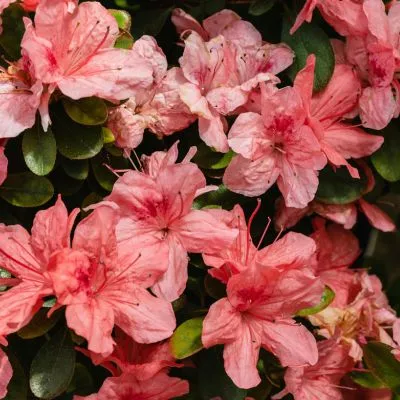Azalea Landscape Uses: Transform Your Outdoors with Stunning, Vibrant Designs
Introduction
Azaleas are the most spectacular show-stoppers in any garden, providing colorful bursts that will captivate and invigorate. Their vibrant blooms in shades of red, pink, white, and purple can transform dull outdoor spaces into lively gardens. They thrive in different climates and can be designed into borders, hedges, or as focal points in gardens. Azaleas don’t just enhance the curb appeal, but they also provide an aura of calm in your outdoor space. If you want to transform your backyard into a vibrant setting, these flowers are the perfect choice. Let’s discover how This plant can enhance your landscaping design to new levels.
Why Is Azalea Landscape the Secret to a Breathtaking Outdoor Space?
Azaleas add vibrant color and rich textures to outdoor spaces, which makes them an outstanding option for designing your garden. Their stunning blooms make for eye-catching displays in the spring, while their evergreen varieties offer year-round attractiveness. this plant can be adapted to borders, garden beds, and container plants, which allows you to create your garden with ease. The fact that they thrive in shaded environments makes them ideal for areas in which other plants struggle. Incorporating flowers into your garden can bring depth, grace, and natural beauty to your garden, quickly changing it into a stunning outdoor oasis.
Where Do Azaleas Thrive Best? Discover Their Ideal Home Country

Azaleas are native to regions with temperate climates where the soil is full of moisture and filtering sunlight. They thrive naturally in places such as Japan, China, and areas of North America, thriving under canopy forests. If you recreate the same conditions at home, plants will give you vibrant blooms and healthy leaves. The secret lies in providing acidic, well-drained soil that is safeguarding them from strong winds. If you have a pleasant climate and a shaded area, the flowers will adjust perfectly, creating a stunning feature in your garden every year.
Azalea Plant Profile: Essential Growing and Care Information
| Characteristic | Details |
| Common Name | Azalea |
| Botanical Name | Rhododendron spp. |
| Family | Ericaceae |
| Plant Type | Shrub |
| Mature Size | 3 to 6 feet tall, 3 to 5 feet wide |
| Sun Exposure | Partial Shade to Dappled Sunlight |
| Soil Type | Rich in Organic Matter |
| Soil pH | 4.5 to 6.0 |
| Hardiness Zones | 4 to 9 (varies by species) |
| Native Area | Asia, North America, Europe |
| Toxicity | Toxic to Pets (when ingested) |
How Much Light Do Azaleas Need to Flourish in Your Garden?
Azaleas prefer bright, indirect light to achieve their maximum potential. In the long run, direct sun can cause scorching and stop blooming, and excessive shade can reduce the production of flowers. Morning sunlight coupled with afternoon shade provides the ideal balance for growth. If your garden is exposed to the all-day sun, think about planting plants next to taller trees or trees to provide natural shade. Controlling light exposure will allow plants to produce large, vibrant blooms without degrading the health of the leaf. A bright, shaded, and well-lit location will keep them flourishing every season.
What’s the Best Soil for Azaleas to Ensure Stunning Blooms?
Azaleas thrive in soil that is acidic and has a pH of 4.5 to 6. The well-drained, rich soil allows roots to breathe while retaining enough moisture to support healthy growth. Organic matter in the form of a mixture, such as pine bark or compost, improves the availability of nutrients and enhances the texture. If your soil is acidic the addition of sulfur or peat moss will help to regulate acidity levels. Loamy, loose soil provides plants with the ideal foundation for strong roots and stunning flowers when you provide the perfect amount of nutrients and drainage that ensures consistent blooming and lush, healthy foliage throughout the year.
How Often Should You Water Azaleas for Optimal Growth?
Azaleas require consistent watering; however, overwatering could cause root decay. Make sure to water deeply if the top of the soil appears dry, typically at least once a week, based on the weather conditions and the type of soil. In hotter seasons, frequent watering is essential to keep the plants well-hydrated. The mulching around their base will help keep moisture in and help regulate temperature. Be sure to avoid soil that is wet by ensuring adequate drainage. Regular watering promotes the lush flowers and vibrant foliage, but irregular watering can stress the plant. By making sure that the soil is evenly moist, the plants can flourish and preserve their beauty throughout the season.
What Temperature and Humidity Levels Help Azaleas Thrive Year-Round?
Azaleas flourish in temperatures that are moderate and prefer conditions between 60 and 75 degrees F. They are able to withstand cooler nights; however, extreme temperatures or frost could cause damage to leaves and buds. Humidity plays an important role since plants prefer humid air that resembles the natural habitat of woodland. If your surroundings are dry, misting the air or placing an ice tray nearby can aid. Extreme temperature fluctuations can be stressful for the flowers; therefore, shielding them from harsh temperatures or wind can ensure constant expansion. Regular, moderate temperatures coupled with a healthy humidity level ensure that plants remain active throughout the entire year.
Which Fertilizer Works Best to Boost Azalea Growth and Flowers?
Azaleas most benefit from slow-release, balanced fertilizers formulated for plants that prefer acid. Formulas high in nitrogen, phosphorus, and potassium help to build robust root systems, lush leaves, and abundant blooms. Feeding plants during the early spring and after flowering provides nutrients but not overpowering them. Organic alternatives, such as compost or fish emulsions, increase the health of soil in the long run. Be careful not to over-fertilize because it could lead to excessive growth of leaves and fewer flowers. When you choose the right fertilizer and apply it with care, it will encourage this plant to produce more vibrant, healthier blooms year after year.
How to Prune Azaleas for Healthier Plants and More Blooms
Pruning azaleas at the right moment shapes the plant, increases the circulation of air, and also stimulates the growth of new plants. The best time to trim is after the flowering stage to prevent cutting off buds for the next season. Take out dead or overcrowded branches to let the center open and focus the energy towards flowering. A gentle trimming helps maintain shape, while more abrasive cuts can rejuvenate older plants. Pruning does not just improve the appearance but also helps strengthen the plant, encouraging healthy foliage and more blooms. If you take care of it regularly, your flowers will continue to bloom every year, bursting gardens with vibrant colors.
Easy Azalea Propagation Techniques to Expand Your Garden
Propagating azaleas is an easy method to increase the number of plant life and improve the beauty of your garden. Cuttings of softwood taken in the late spring will quickly grow in soil that is well-drained and moist. If you keep the cuttings damp and shaded, they encourage rapid growth. Layering is a different method of growth that allows stems to grow roots and remain affixed to the plant. The division of mature azaleas creates new plants in a matter of minutes. If you are patient and attentive, these methods produce healthy flowers that reflect the beauty of their parent plants, growing the garden organically and easily with time.
How to Encourage More Blooms on Your Azaleas This Season

In order to get your azaleas to create more blooms, concentrate on the timing and health of the plant. Azaleas put their buds in the nick of time after blooming; therefore, pruning them right after they bloom will prevent accidental removal of buds. A well-drained, acidic soil makes sure that the roots stay well-nourished and ready for the growth of new plants. Regular feeding of a fertilizer designed for plants that are acid-loving increases the plants’ energy reserves, directly stimulating bloom development. The right amount of water, but not over-saturated, ensures that the roots are healthy. If you take care of them, your plants will reward you with more full, colorful blooms every season.
Propagating Azaleas via Offshoots: A Step-by-Step Guide to Success
Offshoots are a quick and effective method of growing new azaleas using the existing plant. Offshoots naturally grow in the midst of healthy plas and grow their own roots as they grow. When you carefully separate them and place them in nutrient-rich and damp soil, you will encourage rapid adaptation and growth. The new plant should be in shade and well-watered throughout the initial few weeks, guaranteeing the development of strong roots. This technique not only increases the size of your garden but also preserves the attributes of the plant that is a parent. With little effort, you can grow blooming, vibrant plants year after season.
FAQ: Azalea Care and Growing Tips
1. How often do I need to water my azaleas?
Azaleas love consistently moist but not overly waterlogged soil. It is recommended that they be watered thoroughly at least every week, based on the weather conditions and the type of soil. When the weather is dry, be sure to examine the soil often to make sure the roots remain well-hydrated.
2. What kind of soil is ideal for Azaleas?
Azaleas flourish in well-drained and acidic soil that has an acidic pH of 4.5 to 6.0. Mixing organic matter such as compost or pine bark improves soil quality and encourages healthy root structures.
3. Azaleas can grow in full sunshine?
Azaleas like light shade or dappled sun. A full-sun day may cause scorching of leaves and diminish blooms, while excessive shade could hinder the blooms. Morning sun and afternoon shade are the best equilibrium.
4. What is the ideal time to cut Azaleas?
The ideal time to trim the azaleas is after they have finished blooming. This lets the plant make up new flowers for the coming season without cutting the stems off.
Conclusion
Care for azaleas is an enjoyable experience that increases the beauty and vibrancy of your garden every year. When you understand their particular needs, like an acidic soil that is well-drained, some sunlight, and frequent irrigation, you can create the ideal conditions for them to flourish. Proper pruning, fertilization, and propagation methods not only help plants grow healthier, but they can also help to increase flowers, which can transform your garden space into a beautiful garden. No matter if you’re an experienced gardener or just beginning out, these plants are adaptable and wonderful landscaping options.







